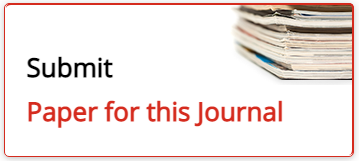Journals & Publications

Journal of Climate Change
ISSN: 2395-7611
Indexed In : Web of Science (Emerging Sources Citation Index)
![]() Climate change is reality which deals with the problem of climate variability and change and it deals with descriptions, causes, implications, interactions, impact and responses among other causes. The purpose of the journal is to provide a platform to exchange ideas among those working in different disciplines related to climate variations. The journal also plants to create an interdisciplinary forum for discussion of evidence of climate change, its causes, its natural resource impacts and its human impacts. The journal will also explore technological, policy, economy, strategic and social responses to climate change. It will be peer-reviewed, supported by rigorous processes of criterion-referenced article ranking and qualitative commentary, ensuring that only standard accepted quality work of the greatest substance and highest significance is published.
Climate change is reality which deals with the problem of climate variability and change and it deals with descriptions, causes, implications, interactions, impact and responses among other causes. The purpose of the journal is to provide a platform to exchange ideas among those working in different disciplines related to climate variations. The journal also plants to create an interdisciplinary forum for discussion of evidence of climate change, its causes, its natural resource impacts and its human impacts. The journal will also explore technological, policy, economy, strategic and social responses to climate change. It will be peer-reviewed, supported by rigorous processes of criterion-referenced article ranking and qualitative commentary, ensuring that only standard accepted quality work of the greatest substance and highest significance is published.
Climate Systems and Sustainable Development; Pollution, Climate Change, Risk Assessment, and Human Health; Green Technology and Climate Change Impact; Climate Change Impacts on Cryosphere, and Water Resources Systems; Water Sustainability (Surface and Ground Water) and Climate Change; Agricultural Sustainability and Climate Change; Urban Sustainability and Storm Water Management under Changing Climate; Mitigation and Adaption of Climate Change by Green Production, Pollution Prevention and Control; Dynamics of Coupled Natural and Human Systems Under Climate Change Impacts; Unique Interactions between the Environmental System, Climate Change, Land Use, Ecosystem Function and Services; Modeling Approach to Mitigate and Understand the Climate Change.
![]() Plagiarism should be below 20%.
Plagiarism should be below 20%.
![]() Submission deadline: March 25, 2022
Submission deadline: March 25, 2022
![]() After submission, it will take 15 - 20 days for Review process and after acceptance it will take 30 days for Publication
After submission, it will take 15 - 20 days for Review process and after acceptance it will take 30 days for Publication
Each papers should be accompanied by an Abstract not exceeding 250 words.
1. The manuscript should not exceed 15 A4 size pages or 4000 words including tables and illustrations. The editor reserves the right to adjust style to certain standards of uniformity. Research/Scientific/Short notes should generally not be more than six A4 pages.
2. Keywords (4- 5 only) and list of references should be supplied by the author(s). Tables and captions to figures should be typed on a separate sheet.
3. Names and addresses of at least three suitable reviewers may be submitted along with the manuscript but the editorial board will use these names only as a guidance and the review process will not be limited to this list only.
4. Illustrations should be line drawings in black. Laser printed figures are preferred. In case of photographs, originals may be sent. Figures/photographs should be identified with a number. All lettering should be done only by computer. Colour illustrations must be submitted as original photographs, high-quality computer prints or transparencies. Colour graphics or photos may invite page charges at the discretion of the editor and publisher.
5. References to unpublished work be avoided. International standards must be followed at all points of references eg. name(s) of author(s), year of publication, title, publisher, volume no. and page no. and must be checked thoroughly. Without volume, page number etc., of all cited references, manuscripts cannot be accepted for review. For example, (a) Madhavan, N. and V. Subramanian (200 I). Fluoride concentration in river waters of South Asia. Current Science, 80: 1312-1319. (b) Silva, E.I.L. ( 1999). Status of water quality in Sri Lanka. In: Recent trends in Environmental Biogeochemistry. V. Ittekkot and V. Subramanian (eds.). SCOPE publication, Hamburg University, Hamburg, Germany, 240 p.
6. All manuscripts should be accompanied by a signed statement, by one of the authors on behalf of all authors that (a) transfer copyrights to the publisher (b) an undertaking that the manuscript has not been submitted/accepted or published elsewhere. Until this statement is received, the manuscript processing will not start. The signed statement can be sent along with the hard copy.
7. Once a manuscript is submitted, a reference number will be assigned. This reference number should be used for all future correspondence. Till the referral process is over, editorial board does not entertain any direct communication to anyone of them.
8. Any communications sent to various distributers in different countries will not be responded

